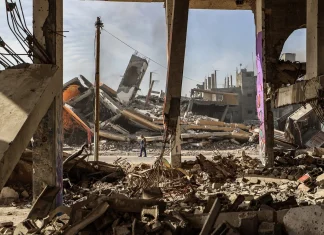
The Rising Storm of Tariffs: America’s Bold Gamble on Pharmaceuticals and Global Trade
Picture this: a world where the costs of life-saving medicines could soar by more than double, reshaping industries and lives alike. In an unexpected twist of economic firepower, former US President Donald Trump has thrown down the gauntlet again, announcing stunning plans to impose tariffs on imported pharmaceuticals that could skyrocket to a staggering 250%. This move, aimed squarely at reviving domestic manufacturing, is part of a broader strategy that includes fresh levies on foreign semiconductors and tightening restrictions on trading partners, most notably India.
“We want pharmaceuticals made in our country,” Trump declared with characteristic bluntness during a CNBC interview. His voice echoed a call to bring back industrial might to American soil – but at what global cost?
The Details Behind the Tariff Surge
Initially, the tariff on imported pharmaceuticals is slated to begin at a modest level, but Trump intends to ramp it up aggressively, first to 150% within a year or so, and eventually to that breathtaking 250%. For context, the US currently applies tariffs ranging mostly between 0-10% on medicines, so this proposed increase represents a seismic shift.
The rationale is clear: bolster the domestic pharmaceutical industry, reduce reliance on foreign supply chains, especially as the COVID-19 pandemic laid bare the vulnerabilities of globalization. Yet, with the US importing approximately $116 billion worth of pharmaceuticals annually, according to the International Trade Administration, the economic ripple effects could be profound.
But the pharmaceutical sector isn’t the only one in the crosshairs. Semiconductor imports will also face fresh duties following ongoing government probes into national security concerns. Semiconductors—those tiny chips powering everything from smartphones to cars—have become emblematic of technological sovereignty battles. Trump’s administration has already slapped steep tariffs (50%) on steel and aluminum imports and imposed selective levies on autos and parts, signaling a broader trade realignment.
The India Factor: Tariffs on the Horizon
Meanwhile, India finds itself under pressure as well. Trump warned of significantly increased tariffs on Indian goods in retaliation for New Delhi’s purchase of Russian oil amid global sanctions. This development could further complicate the already fraught US-India trade relationship, which saw $142 billion in bilateral trade last year. The announcement sparked concern among Indian exporters and policymakers alike, with many fearing a potential spiral into tit-for-tat tariffs.
“We are watching the situation closely,” said Anjali Mehta, a Mumbai-based trade analyst. “India’s economy depends heavily on exports, and increased tariffs could disrupt many industries from pharmaceuticals to textiles.”
A Tense Dance with the European Union
While the US flexes its tariff muscles, the European Union has attempted to cool trade tensions with Washington. Following intense negotiations, Brussels agreed to suspend retaliatory tariffs on $93 billion worth of US goods that were planned to come into effect on August 7. Olof Gill, a spokesman for the European Commission, described the move as an “insurance policy” against escalating tariffs—an accord designed to prevent a lose-lose scenario for both sides.
“The agreement reached will have a stable platform from which we will secure crucial supply chains,” Gill assured reporters, emphasizing the importance of predictability for businesses across the Atlantic.
But not all in Europe are singing from the same hymn sheet. Germany’s Finance Minister, Lars Klingbeil, voiced frustration over the EU’s perceived softness in negotiations, stirring controversy. Klingbeil’s request for an exemption from US steel tariffs during talks with US Treasury Secretary Scott Bessent highlights the delicate balancing act Europe faces—juggling unity against diverse national economic interests.
Understanding the Tariff Landscape
- The EU faces a comprehensive 15% tariff on goods entering the US market—an all-encompassing rate except for steel and aluminum, which are treated separately.
- Tariffs on pharmaceuticals and semiconductors currently stand at zero but could rise under ongoing US Section 232 investigations, capped at a 15% ceiling.
- Cars and car parts are also subject to the same 15% maximum tariff rate without any quota limits, reflecting a fragile compromise to avoid triggering a full-blown trade war.
The suspension of EU countermeasures is set for six months, allowing time for ongoing talks to crystallize into a formal trade framework. Yet, there’s no set timeline on when a final joint statement will emerge, underscoring the uncertainty hanging over transatlantic trade relations.
What Does This All Mean for the Global Economy?
Whether you’re a consumer, manufacturer, or policymaker, these tariff moves are hard to ignore. Higher costs for imported drugs could inflame healthcare inflation in the US, pushing up prices for patients already grappling with affordability issues. According to the Kaiser Family Foundation, American households spend about 17% of their total medical expenses on prescription drugs, a figure that could swell significantly if tariffs bite.
And it’s more than economics; it’s about sovereignty, security, and the fragility of global supply chains. The pandemic revealed how interconnected and vulnerable the world economy really is, prompting a nationalist retrenchment in many quarters. Trump’s tariffs reflect a desire to reclaim control but risk fracturing the international trade architecture painstakingly built over decades.
In this unfolding saga, one must ask: How do we balance national interests with global cooperation? Can protectionism shield domestic industries without unintentionally harming consumers and allies? As these tariffs loom, the world watches, waits, and wonders.
Voices from the Ground: Industry, Experts, and Citizens React
At a bustling pharmaceuticals factory in New Jersey, production manager Lisa Rodriguez reflects on what these tariff changes might bring:
“If tariffs push companies to manufacture locally, it could create jobs and innovation here. But if costs rise too sharply, patients might suffer. It’s a double-edged sword.”
Meanwhile, economist Dr. Samuel Chen from the Global Trade Institute paints a broader picture:
“Trade wars rarely have clear winners. They create volatility and uncertainty, and in sectors like pharmaceuticals, the stakes are human lives. Negotiated compromises, like the EU-US deal, offer hope but also remind us how fragile these arrangements remain.”
Back in Mumbai, small-business owner Ramesh Patel worries aloud:
“Our exports are the lifeblood of many families. If new tariffs hit, people in my community could lose jobs. We need dialogue, not divisive measures.”
Looking Ahead: The Road to Resolution?
The world trade system stands at a crossroads. Will the United States’ bold tariff strategies inspire a renewed focus on domestic resilience and innovation, or will they kindle further discord and economic fragmentation? The EU’s cautious diplomacy offers a beacon of negotiated peace, but skeptics remain wary.
As you read this, consider your own role in this global drama. How does trade policy affect your daily life, your access to medicines, or the prices at the local store? And in an era of rising nationalism, how can global citizens foster collaboration and understanding to navigate such complex economic terrain?
In the end, this unfolding story is more than just numbers and policies. It’s about people, communities, and the choices we make as a global family.
Stay tuned—as the next chapter in this grand tale of tariffs and trade is already writing itself.









